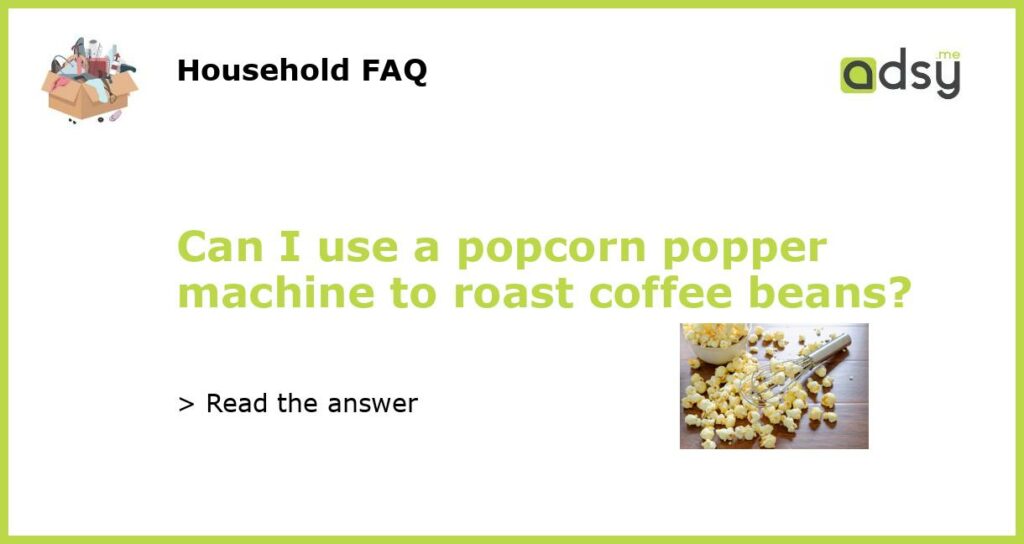Yes, you can use a popcorn popper machine to roast coffee beans
Roasting your own coffee beans can be a fun and rewarding experience, and using a popcorn popper machine is a popular method among home coffee roasters. While it may not be the most conventional method, a popcorn popper can produce great results when it comes to roasting coffee beans. However, there are a few things to keep in mind when using a popcorn popper machine for coffee bean roasting.
Choosing the right popcorn popper for coffee bean roasting
Not all popcorn poppers are suitable for coffee bean roasting, so it’s important to choose the right machine. Look for a popcorn popper that has a flat and shallow bottom, as this allows the coffee beans to roast more evenly. Avoid poppers that have a mesh bottom, as the beans can easily fall through. It’s also important to find a popper without a non-stick coating, as this coating can release harmful chemicals when exposed to high temperatures.
Understanding the roast levels
Roasting coffee beans involves a process of heating and caramelizing the sugars within the beans, and different roast levels will produce different flavors and aromas. It’s important to understand the different roast levels and how they can affect the taste of your coffee. Light roasts typically have a more acidic and fruity taste, while darker roasts tend to be more full-bodied and bitter. Experimenting with different roast levels can help you find the flavor profile that you prefer.
Tips for using a popcorn popper for coffee bean roasting
When using a popcorn popper machine for coffee bean roasting, it’s important to follow a few simple tips to ensure the best results:
- Preheat the popcorn popper before adding the coffee beans. This will help to ensure that the beans roast evenly.
- Only use a small amount of coffee beans at a time, as using too many can prevent proper airflow and result in uneven roasting.
- Stir the beans constantly throughout the roasting process to prevent them from burning.
- Be mindful of the smoke produced during roasting, as it can be quite strong. It’s best to roast coffee beans in a well-ventilated area or near an open window.
- Roast the beans to your desired level and listen for the “first crack” and “second crack” sounds, which indicate the progress of the roast. The first crack is typically when the beans reach a light to medium roast, while the second crack signals a darker roast.
Considerations and limitations of using a popcorn popper
While using a popcorn popper machine can be a convenient and affordable way to roast coffee beans at home, there are a few considerations and limitations to keep in mind:
- Popcorn poppers are not designed for coffee bean roasting, so they may not have the same level of precision and control as dedicated coffee roasting machines. This can result in less consistent roasts.
- Roasting coffee beans produces smoke, and using a popcorn popper indoors can lead to a strong smell and potential smoke alarms being triggered.
- Using a popcorn popper for coffee bean roasting may void the machine’s warranty, so it’s important to check the manufacturer’s guidelines before attempting to roast coffee beans in a popcorn popper.
- Roasting coffee beans can be a messy process, and using a popcorn popper may result in chaff flying around. It’s important to clean the popper thoroughly after each use to prevent buildup and maintain optimal performance.
- Using a popcorn popper for coffee bean roasting requires careful monitoring and attention to prevent the beans from roasting too quickly or burning. This can be more challenging compared to dedicated coffee roasting machines that offer more precise temperature and time controls.






